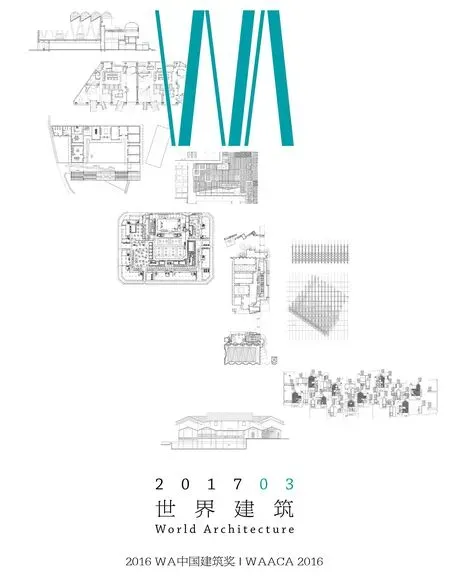唐山第三空间综合体,唐山,中国
建筑设计:李兴钢,谭泽阳,孙鹏,付邦保/中国建筑设计院有限公司
唐山第三空间综合体,唐山,中国
建筑设计:李兴钢,谭泽阳,孙鹏,付邦保/中国建筑设计院有限公司
项目信息/Credits and Data
客户/Client: 唐山诚成房地产开发有限公司
地点/Location:河北唐山/Tangshan, Hebei
主创建筑师/Principal Architects: 李兴钢,谭泽阳/LI Xinggang, TAN Zeyang
设计团队/Project Team: 孙鹏,付邦保,赵小雨,张一婷等/SUN Peng, FU Bangbao, ZHAO Xiaoyu, ZHANG Yiting, et al.
建筑面积/Floor Area: 88,011m2
设计时间/Design Period: 2009.02-2010.09
建成时间/Completion Time: 2015.06
摄影/Photos: 张广源,孙鹏/ZHANG Guangyuan, SUN Peng
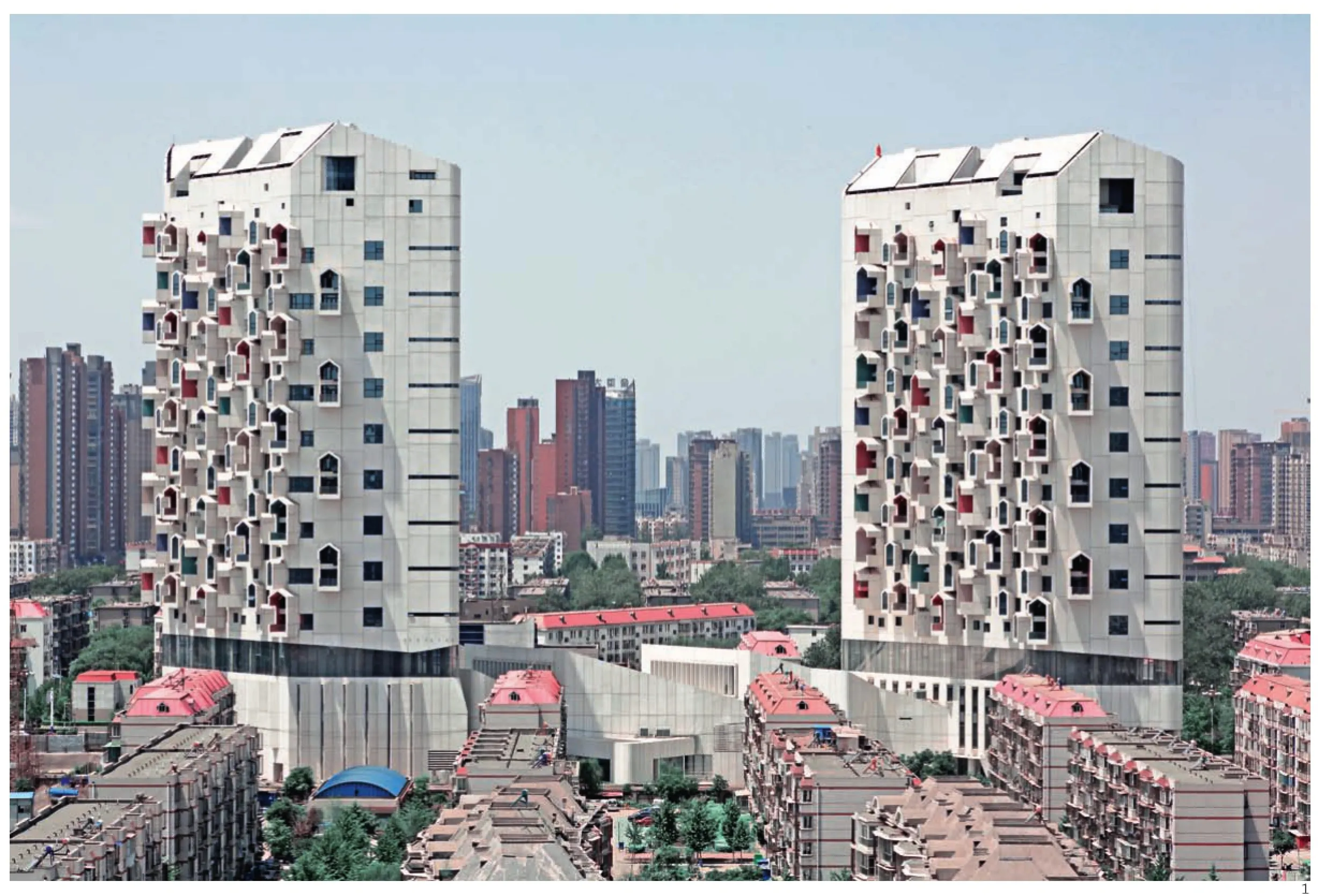
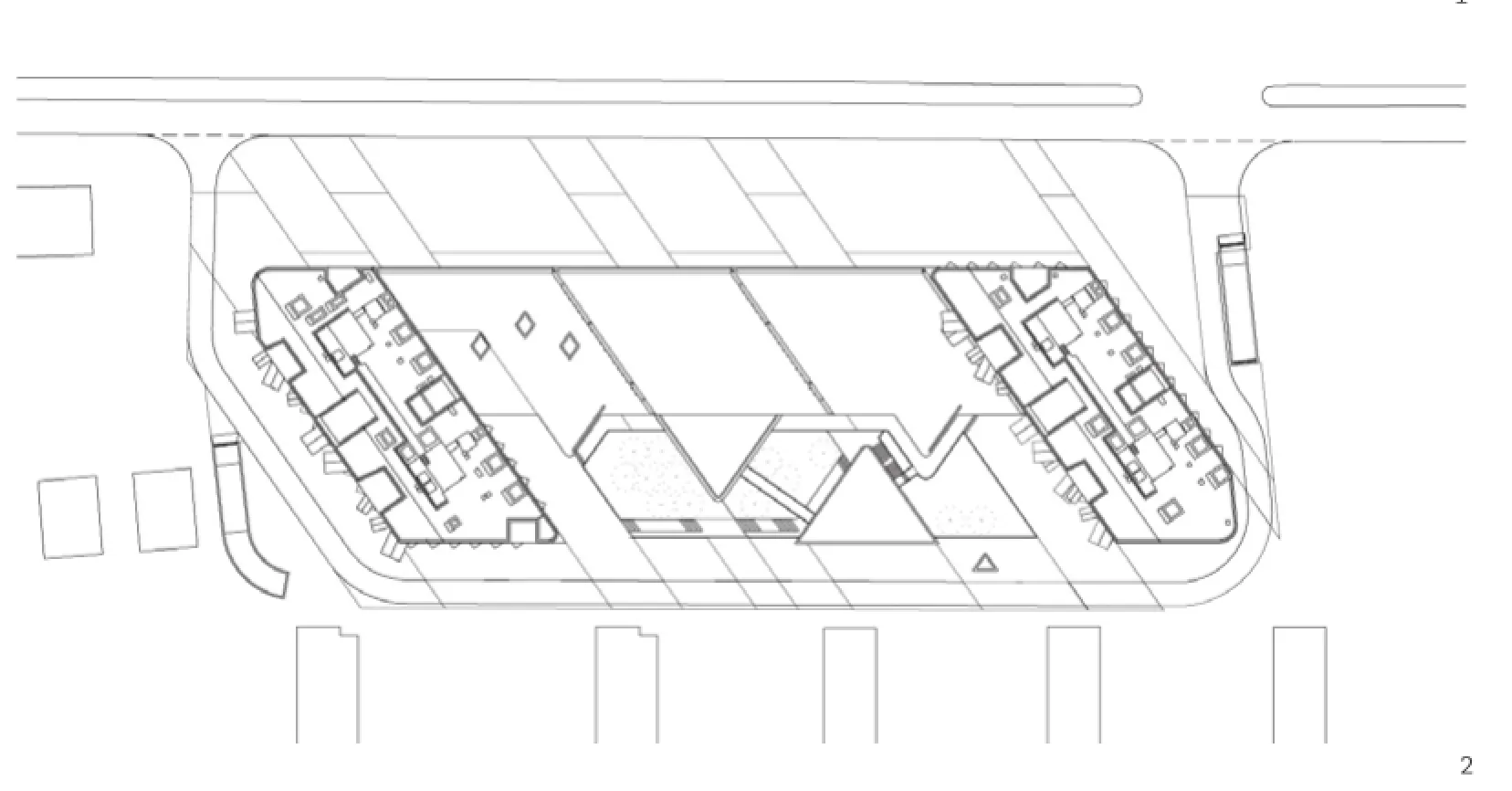
1 东侧鸟瞰/East aerial view2 总平面/Site plan

3 立面局部/Elevation detail
“第三空间”位于唐山繁华的建设北路,其用地东侧紧邻一片南北向平行排列的工人住宅,建筑朝向、布局和塔楼及裙房的体量、形状几乎完全由日照计算得出,以满足严格的日照法规要求:两栋平行的百米板状高楼顺着西南阳光的入射方向旋转了一个角度,朝向东南方向,裙房的屋顶也被“阳光通道”切成了锯齿形状,其东侧留出一个带状的花园空地。第三空间综合体试图表达这样的意象:一个向高空延伸的立体城市聚落,城市中垂直叠摞的76套“别业”宅园。 “标准层”中惯常平直的楼板被以错层结构的方式层层堆叠,形成每个单元中连续抬升的地面标高,犹如几何化的人工台地,容纳从公共渐到私密的使用功能,使人犹如在山地上攀爬穿行,在不断的空间转换中形成静谧的氛围。收藏及影音空间被塑造成“坡地上的小屋”形态,大小、形态、朝向各异的“亭台小屋”被移植于立面,以收纳城市风景,并且就像敞开于都市的一个个生动的生活舞台,成为密集分布的垂直“城市聚落”的象征;顶层单元中,则凭借屋顶之便,引入真正的葱郁庭院,与通常的“别墅”相比,这里的“高度”大不相同。所有复式单元在垂直方向并列叠加,对应的建筑立面悬挑出不同尺度及方向的室外亭台,收纳下方和远处的城市及自然景观,自身也成为城市中的新景观。□

4 南立面局部放大图(复式单元错层错位分布)/Detail of south elevation (the split-leveled and staggered layout of duplex units)
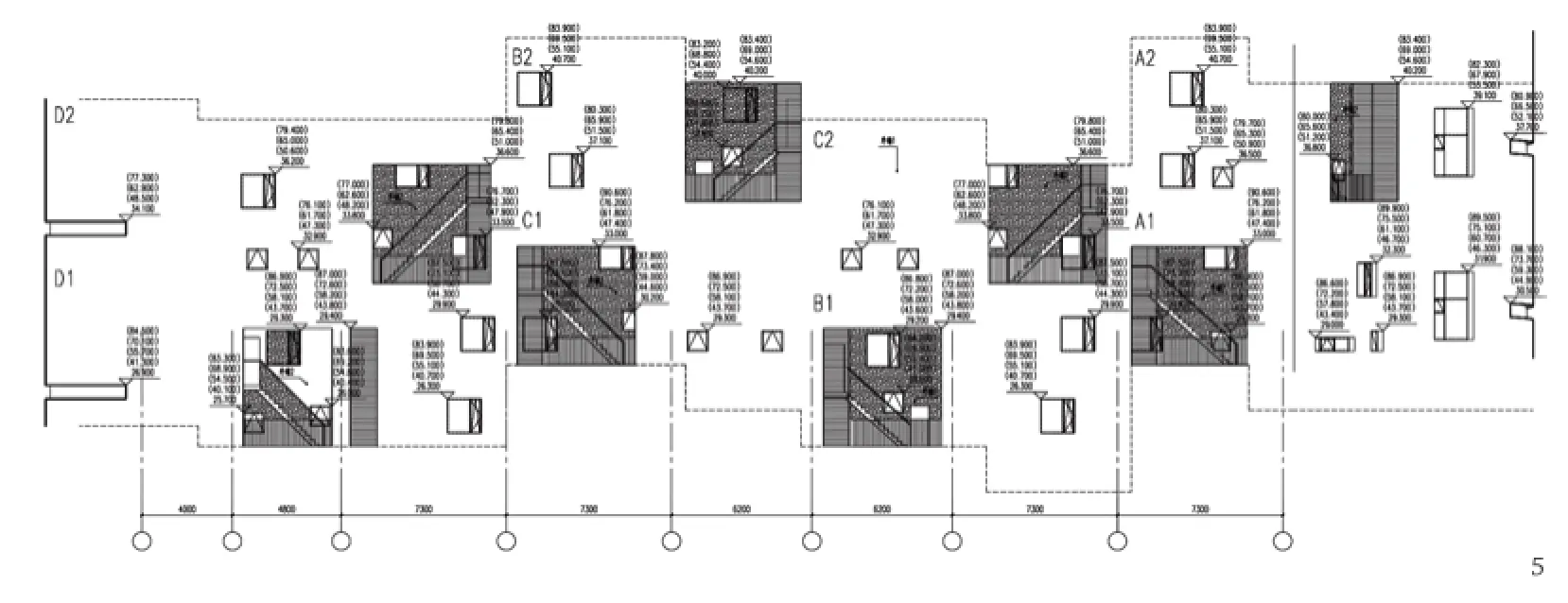
5 北立面局部放大图(复式单元错层错位分布)/Detail of north elevation (the split-leveled and staggered layout of duplex units)

6 立面局部/Elevation detail
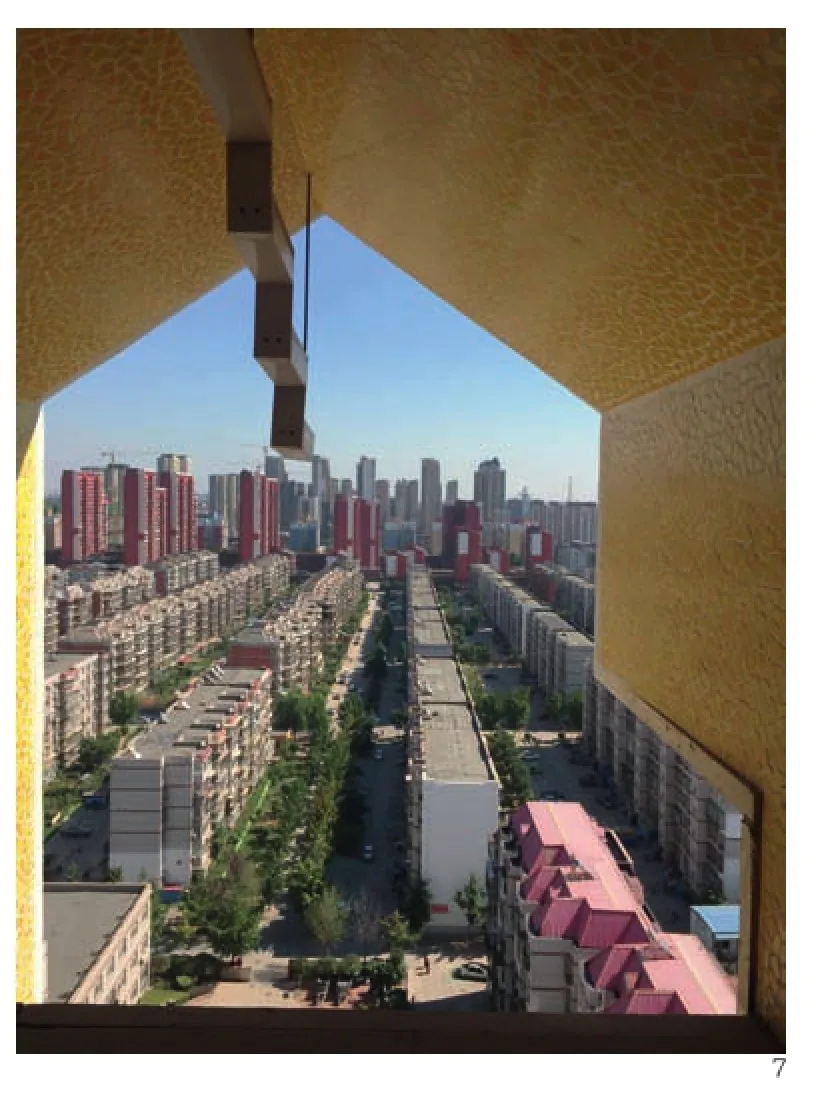
7 从悬挑亭台望出东侧住宅区/Watching the east residential area from the cantilevered pavilion
"The Third Space" is located in the prosperous North Jianshe Road, of which the east side is next to north-south parallel rows of workers' house. The direction, layout, volume and the shape of tower and podium are nearly all determined by calculation of sunlight in order to fulfill the rigorous sunlight standard. Two paralleled 100 meters high slabtype buildings are rotated by a certain degree along the direction of the incoming southwest sunlight. Therefore, the buildings face southeast with the roof of the podium cutting into a zigzag shape and leaving a ribbon shape garden in the east side. "The Third Space" complex tries to convey an image of a three dimensional city settlement extending to the sky with 76 vertical stacked villas. The floor slabs in this project are stacked with staggered structural arrangement and thus form the building bulk in each unit like geometric artificial terraces containing the transition from public function to private function as the inhabitants climb and cross the terraces, feeling quiet atmosphere forming in these continuous spatial transitions. Collection and media space are formed into the shape of houses on the slope. Pavilion houses with different sizes, shapes and direction are all transferred to the elevation in order to take in the city views and serve as several lively platforms of life open to the city. These Pavilion houses thus become a symbol of dense vertical arranged "city settlement".The real verdant courtyard is introduced into the top units with the help of the roof and thus creates a diferent feeling of height from that in the common villa. All the duplex apartment units are stacked vertically with outdoor pavilions of different sizes and directions cantilevered in the corresponding elevation, taking in the city and nature view and becoming a new landscape in the city.□
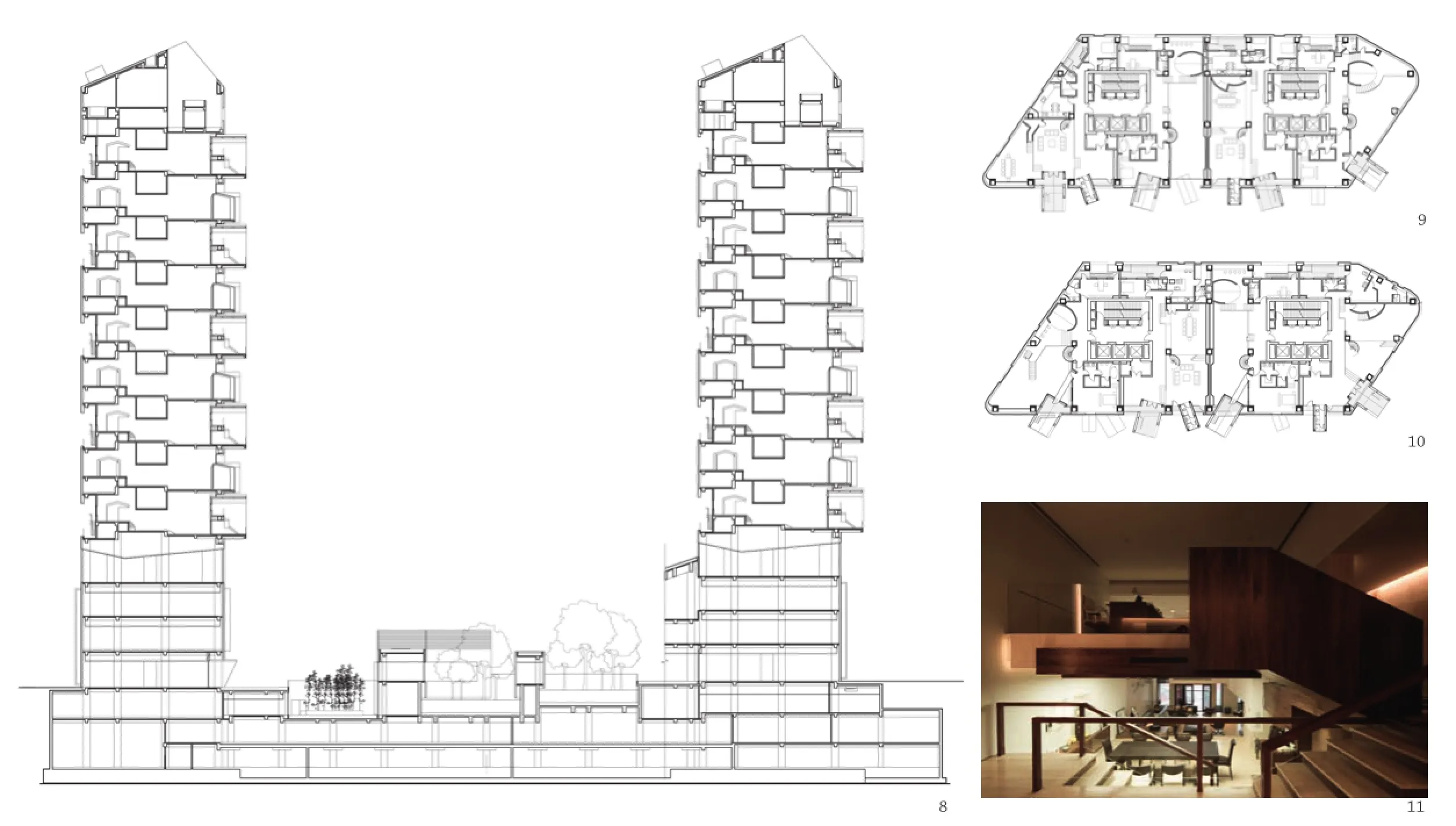
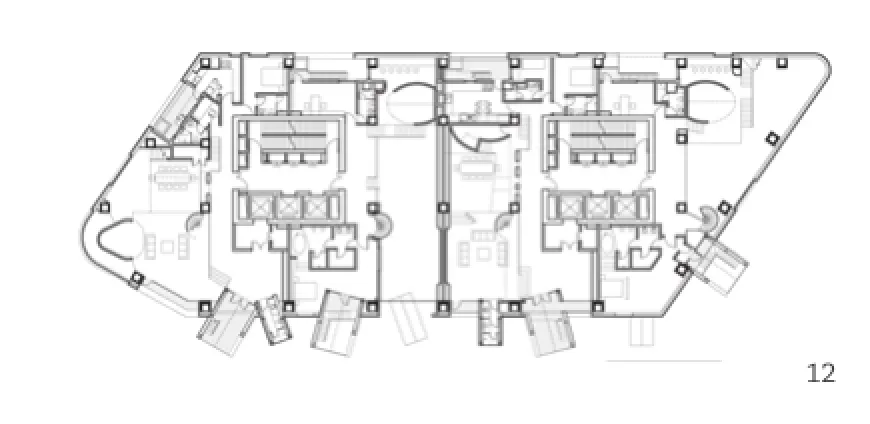
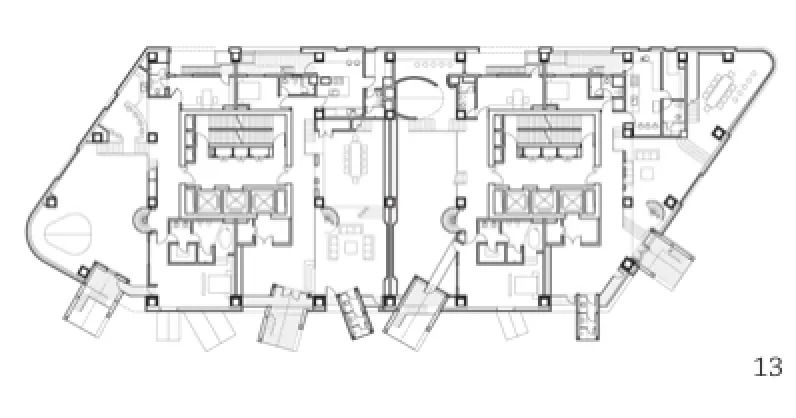
8 剖面/Section9 北楼八层平面/Floor 7 plan of the North Tower10 北楼七层平面/Floor 6 plan of the North Tower11 从楼梯看餐厅/Watching the restaurant from the stairs12 南楼八层平面/Floor 7 plan of the South Tower13 南楼七层平面/Floor 6 plan of the South Tower
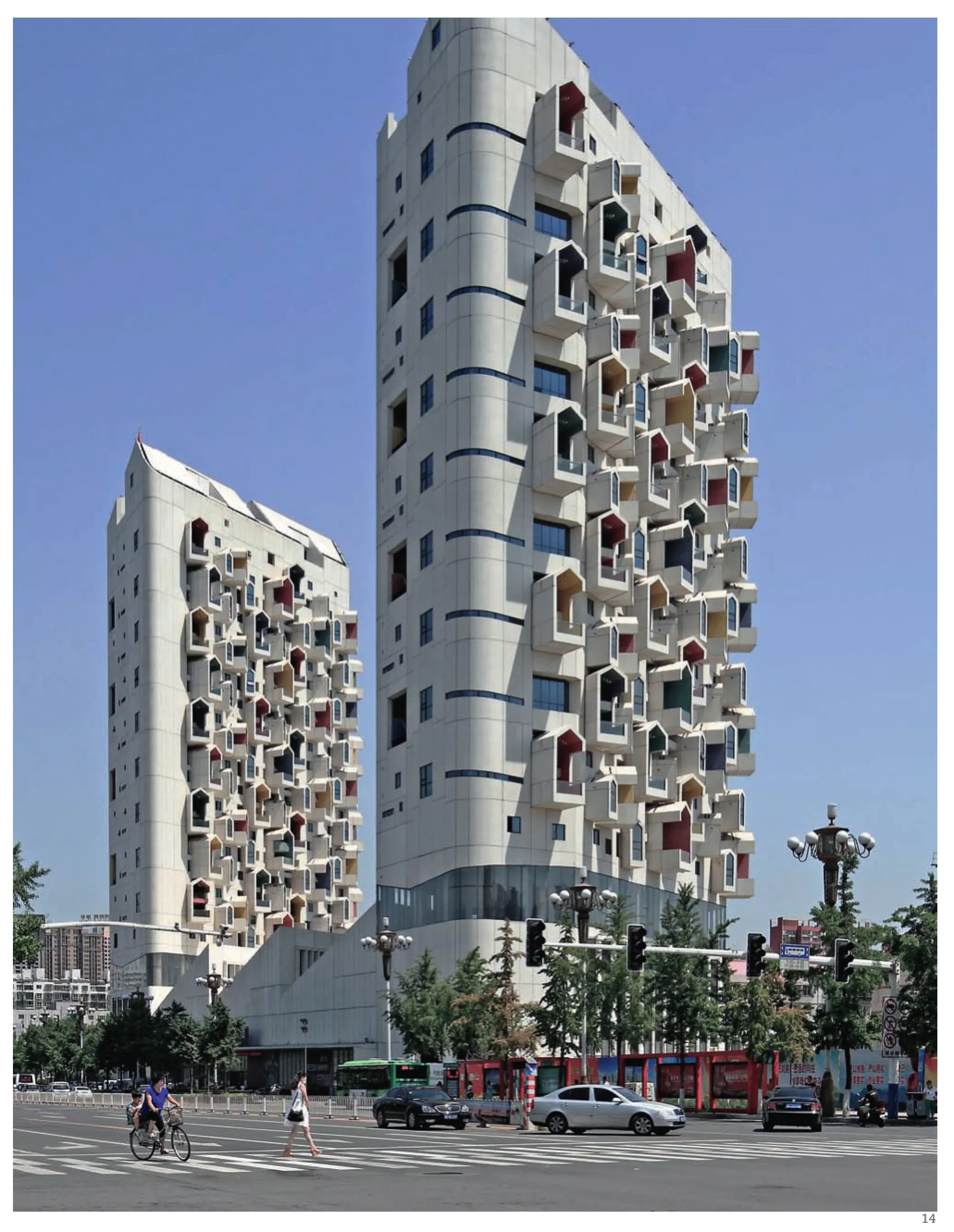
14 西南街景/Southwest street view
评委评语
在城市集合住宅普遍平庸的环境中,建筑师探索了居住单元空间的个性化特征。标准层中楼板以错层的方式层叠交错,形成抬升的地面标高。在区分出公共与私密的不同使用功能的同时,创造出丰富的空间层次,赋予了居住生活多样性的视觉化特征。在立面上,形态、大小、朝向各异的“亭台小屋”不仅收纳了城市风景,而且向城市展示出了一个个生动的生活舞台,自身成为城市中的新景观。□
Jury Statement
Standing out against the often rather mediocre performance of urban collective housing, the architects of this project explore new realms of individuality for residential units. The floor slabs of the standard floors are installed in a staggered way to elevate the floor level - which creates a spatial hierarchy while distinguishing between public and private space usage, and visually expresses the diversity of residential life. In terms of elevation, the shape, size, and orientation of the "small house-like viewing platforms" not only incorporates the city scenery but also gives a stage of vivid life to the city, becoming a part of the city panorama that attracts attention to itself.□
The Third Space, Tangshan, China, 2015
Architects: LI Xinggang, TAN Zeyang, SUN Peng, FU Bangbao/China Architecture Design Group
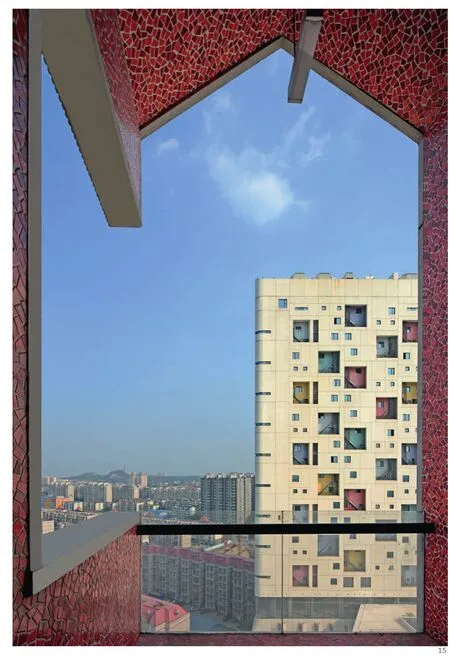
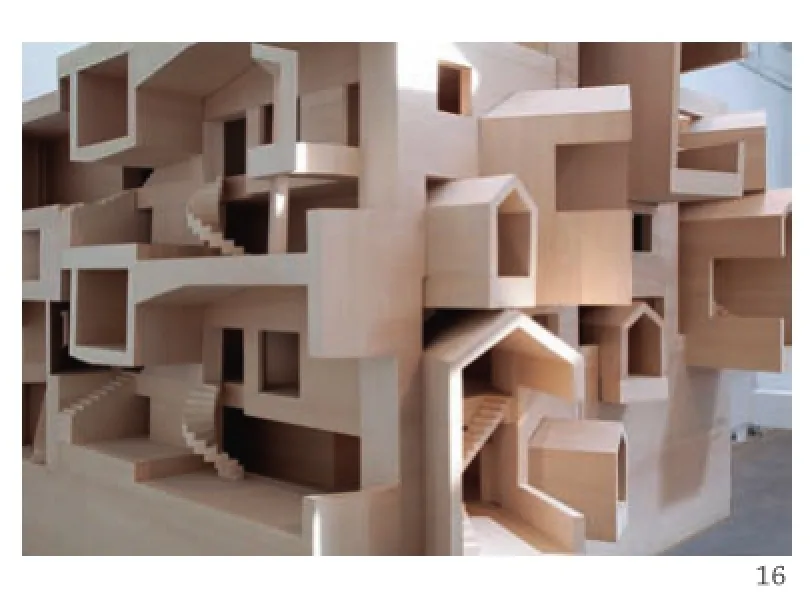
15 从北楼悬挑亭台望向南楼/Watching the South Tower from the cantilevered pavilion of North Tower16 大比例实物模型/Large scale model(摄影/Photo: 夏至/XIA Zhi)

